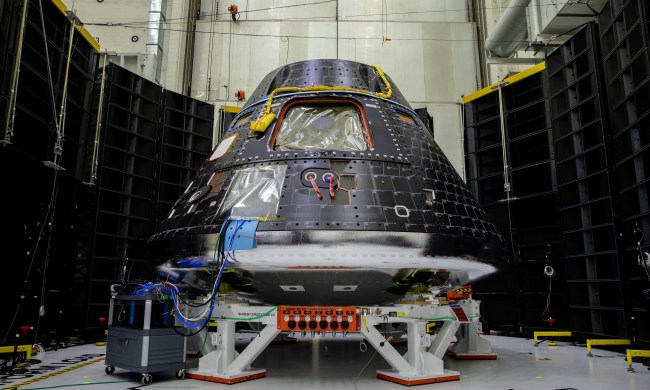Following several delays due to dust storms, NASA’s record-setting Ingenuity Mars helicopter has finally taken its first flight of 2022.
The 4-pound, 19-inch-tall rotorcraft flew at an altitude of 33 feet (10 meters) for almost 100 seconds and covered a distance of about 203 feet (62 meters) during its latest flight, the team at NASA’s Jet Propulsion Laboratory, which is overseeing the current Mars mission, confirmed on Tuesday.
After some dusty weather delays, it’s time to celebrate the #MarsHelicopter’s first flight of 2022! The rotorcraft flew for the 19th time on the Red Planet, soaring for 99.98 seconds over ~62 meters. pic.twitter.com/akSWkbPuST
— NASA JPL (@NASAJPL) February 8, 2022
For its 19th flight since arriving on Mars with the Perseverance rover in February 2021, the diminutive drone flew from a spot in the South Séítah basin toward the Jezero river delta. Imagery captured by its onboard cameras will enable the mission team to plan upcoming routes for Perseverance, which is heading to the delta as part of its ongoing search for evidence of ancient microbial life on the faraway planet.
Ingenuity was supposed to take its first flight of the year in early January, but a dust storm on the Martian surface prompted the mission team to suspend the plan.
As Mars features a thinner atmosphere and a less powerful gravitational pull, tiny particles that get kicked up by Martian winds can create dust storms so fierce they can last for weeks and even cover the entire planet. Indeed, Martian dust is an issue that could also impact future crewed missions to the planet.
For Ingenuity, airborne dust results in a reduced amount of sunlight reaching its solar panels, which are vital for charging the batteries that power the flying machine.
But that’s not the only problem. The dust hanging in the air is heated by sunlight and warms the surrounding atmosphere. This further reduces the density of the already-thin air, making Ingenuity’s flight conditions even more challenging if were to attempt to get airborne.
The good news is that Perseverance is carrying instruments able to detect the storms, enabling the team at JPL to protect Ingenuity from challenging flight conditions.
Ingenuity made history in April 2021 when it became the first aircraft to achieve controlled, powered flight on another planet. Its longest single flight to date took it 2,051 (625 meters) across the Martian surface. Images captured by the aircraft’s onboard camera have helped the Perseverance team to scout locations and plan safe routes for the ground-based rover, while data from its numerous test flights will also help engineers to design even more advanced aircraft for future missions.


